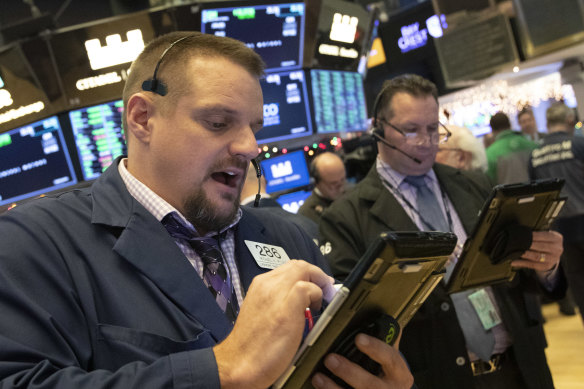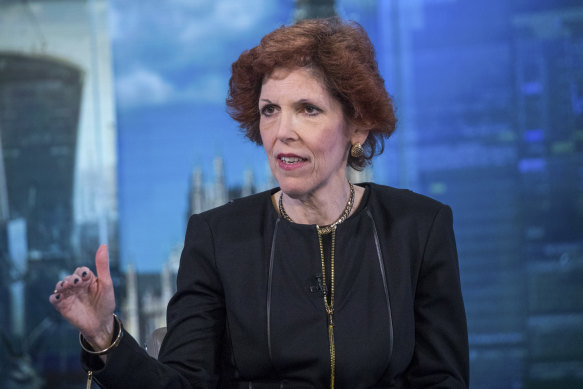ASX slips after Fed official spooks Wall Street
By Millie Muroi
The Australian sharemarket slid on Thursday after a rocky lead from Wall Street, as mining majors, particularly in the energy sector, weighed on the index.
The S&P/ASX 200 was down 4.1 points, or less than 0.1 per cent, to 7,389.3 at the open after two days of flat trading.

Packaging company Amcor (down 1.9 per cent) was the biggest large-cap decliner, but the energy sector was the largest drag on the index, losing 1.3 per cent. Whitehaven Coal, Woodside and Worley shed 1.6 per cent, 1.5 per cent and 1.4 per cent each, as coal prices declined 2.3 per cent.
Heavyweight BHP was up 0.4 per cent as it maintained its forward production guidance and announced record iron ore production in Western Australia.
The real estate sector climbed 0.6 per cent, but financial companies including Suncorp (up 3.2 per cent) and Insurance Australia (up 1.4 per cent) led the individual large-cap advancers. Australian Laboratory Services (up 1.8 per cent) and Sonic Healthcare (up 1.2 per cent) were also among the top climbers.
Overnight, Wall Street had its biggest pullback of the year as a January market rally sputtered after a key Federal Reserve policymaker said the central bank needs to keep raising rates to tame inflation.
Technology stocks led the way lower while weak readings on retail sales and industrial production also helped keep investors in a selling mood. The S&P 500 fell 1.6 per cent after rising as much as 0.6 per cent earlier in the day. The Nasdaq fell 1.2 per cent and the Dow lost 1.8 per cent.
Trading has been unsteady so far this week following two solid weekly gains for the broader market.
Technology stocks were among the heaviest weights on the market. Microsoft fell 1.9 per cent after it became the latest technology company to announce layoffs. The software giant is cutting 10,000 workers or almost 5 per cent of its workforce.
Treasury yields were lower after the government reported that Americans cut back on their spending more than anticipated last month, the second straight decline. The government also reported more encouraging inflation data. Wholesale prices rose 6.2 per cent in December from a year earlier, a sixth straight slowdown for the measure of prices before they are passed along to consumers.

The Fed will announce its next decision on interest rates February 1. Investors are largely forecasting a raise of just 0.25 percentage points next month, down from December’s half-point hike and from four prior increases of 0.75 percentage points.
While there’s growing evidence that high inflation is finally easing, further rate hikes are still needed, according to Loretta Mester, president of the Federal Reserve Bank of Cleveland.
“I still see the larger risk coming from tightening too little,” Mester said in an interview with The Associated Press.
Mester stressed her belief that the Fed’s key rate should rise a “little bit” above the 5 per cent to 5.25 per cent range that policymakers have collectively projected for the end of this year.
The central bank has raised its key overnight rate to a range of 4.25 per cent to 4.50 per cent from roughly zero a year ago. The Fed will announce its next decision on interest rates February 1. Investors are largely forecasting a raise of just 0.25 percentage points next month, down from December’s half-point hike and from four prior increases of 0.75 percentage points.
The broader economic picture is still not clear enough to see whether the Fed’s fight against inflation is working well enough to avoid a recession. Several major banks have forecast at least a mild recession at some point in 2023.
Most Viewed in Business
Source: Thanks smh.com